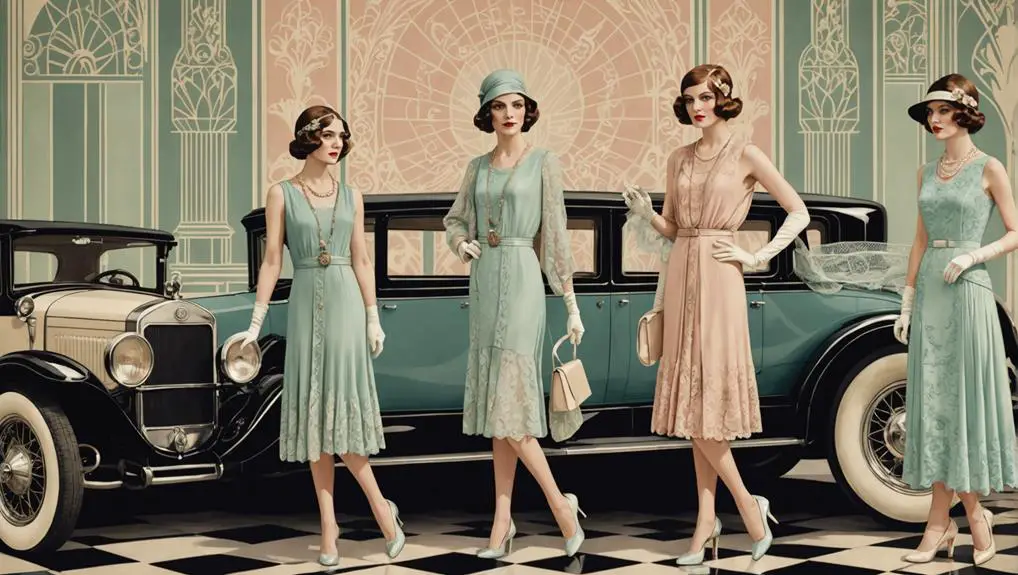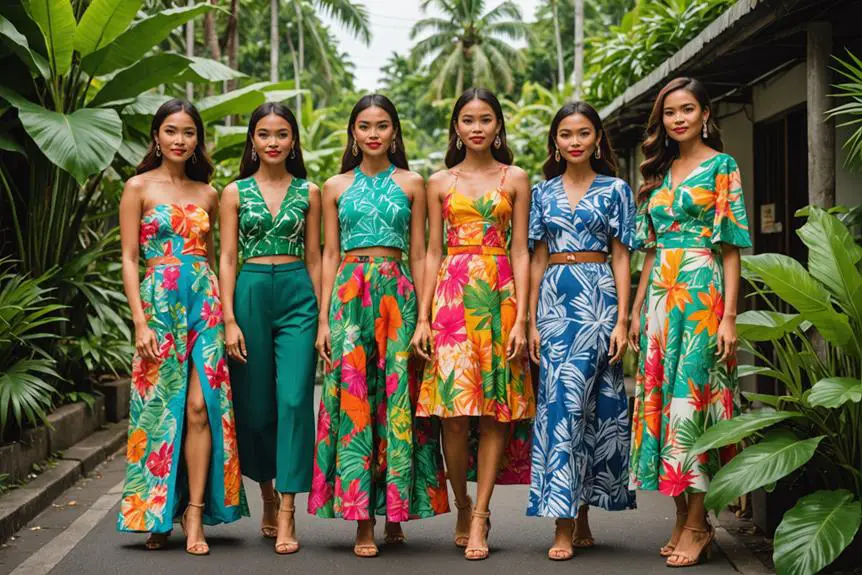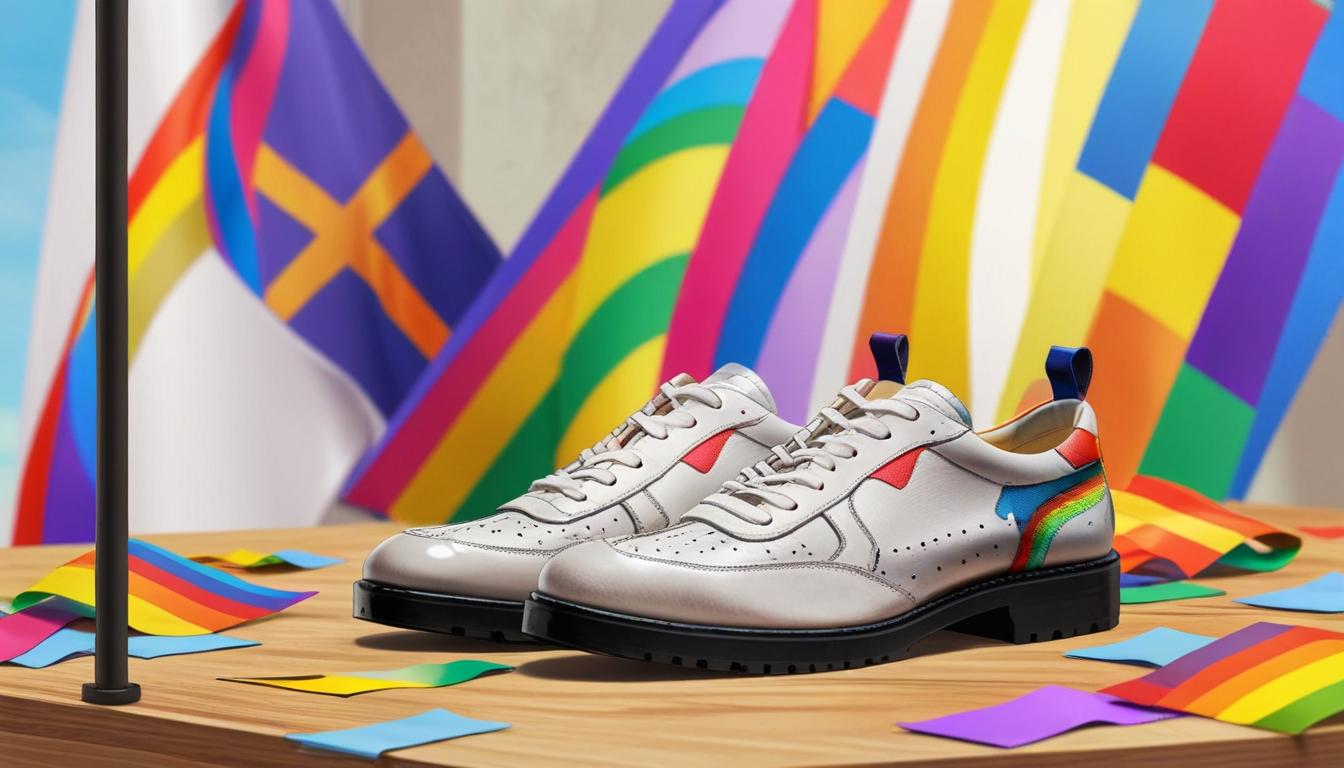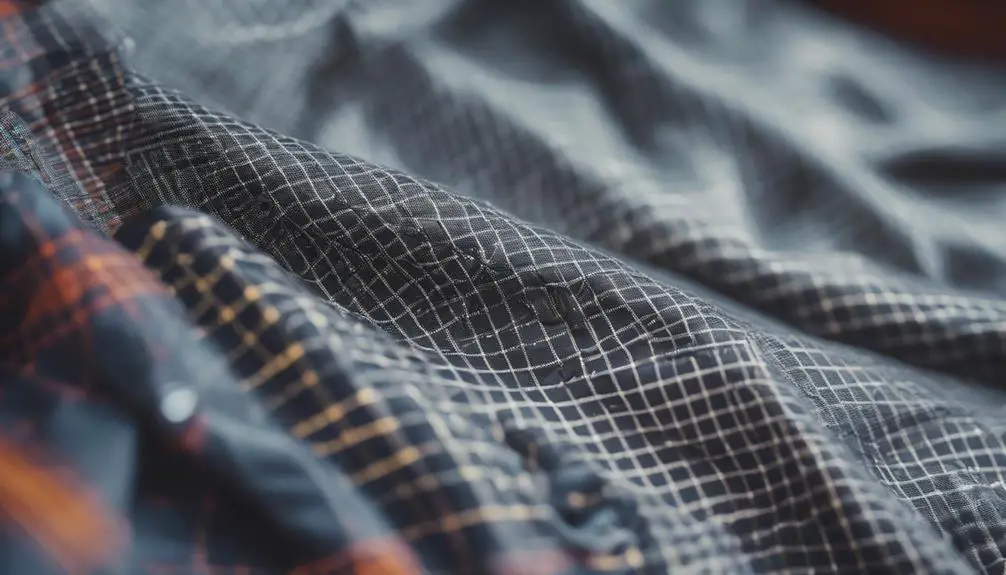In the 1920s, women's Mary Jane shoes became a signature of sophistication and empowerment. Rooted in children's fashion, they evolved into stylish adult wear, symbolizing breaking free from traditional norms. You'll find these closed-toe shoes featured low-cut designs with instep straps, offering both comfort and elegance. Mary Janes were essential for flapper culture, complementing shorter skirts and lively dances, aligning perfectly with the decade's vibrant spirit. Various styles, including T-straps and two-tone combinations, showcased individuality while embracing modernity. As you explore further, you'll uncover more about their lasting cultural impact and fashion evolution.
Origins of Mary Jane Shoes
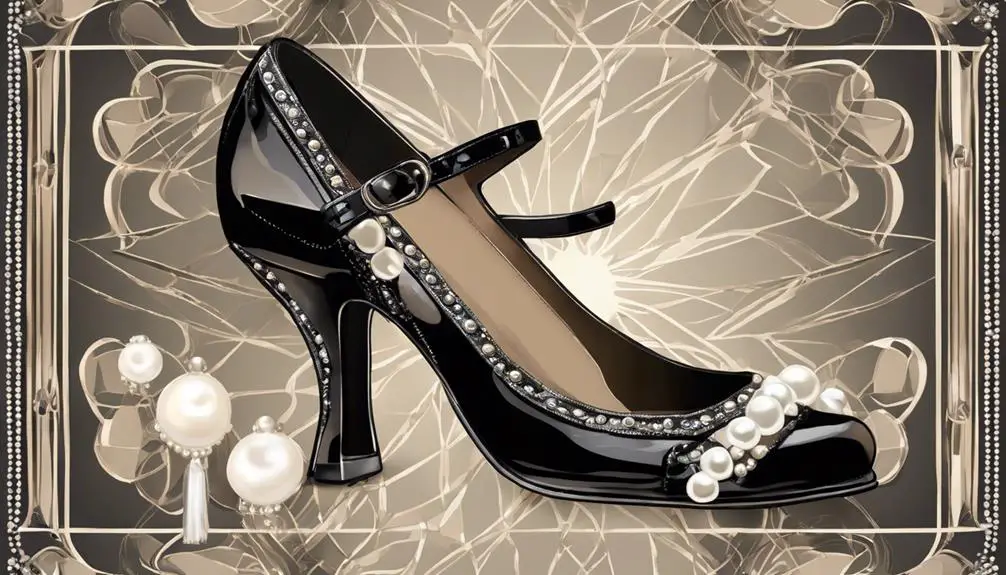
Emerging from a rich historical backdrop, the origins of Mary Jane shoes reveal a fascinating evolution in both design and cultural significance. The closed toe and low-cut design, featuring an instep strap, initially catered to children in the 19th century. Named after a character from the Buster Brown comic strip, which debuted in the early 1900s, these shoes quickly shifted into a staple of women's fashion.
By the 1920s, Mary Jane shoes symbolized sophistication and independence, mirroring broader societal changes. This vintage style, once reserved for young girls, became a fashionable choice for women seeking to embrace new freedoms and assert their identities. The shoe's journey from practical school uniform to a chic accessory underscores the era's shifting attitudes toward women's roles.
As you explore the origins of Mary Jane shoes, consider how this seemingly simple footwear encapsulates a significant cultural moment. It represents not just a design evolution but also the ongoing quest for women's empowerment and self-expression during a transformative decade. The Mary Jane's legacy continues to influence modern fashion, reminding us of the intricate ties between style and societal progress.
Cultural Impact of the 1920s
The 1920s ushered in a vibrant cultural shift, with the rise of Flapper Girls embodying a rejection of traditional norms and an embrace of modernity. During this transformative decade, low-heeled Mary Janes emerged as the quintessential footwear for women seeking comfort and stability while traversing their newfound independence. These beautiful shoes accentuate the spirit of the era, often associated with the flapper lifestyle that celebrated youth, rebellion, and self-expression.
The cultural landscape of the 1920s, characterized by jazz music and lively dance, provided a backdrop for women to redefine their identities. The iconic shoe was popular not just for its elegance but also as a symbol of empowerment, reflecting women's growing confidence and social freedom. As they gained the right to vote, the significance of Mary Jane shoes deepened, intertwining with the broader narrative of women's liberation.
No longer confined to children's fashion, Mary Janes evolved into a staple for women, suitable for both casual outings and formal events. This evolution not only marked a shift in style but also solidified Mary Janes' place in fashion history as a representation of the era's cultural impact.
Fashion Evolution of Mary Janes

As fashion trends took off in the 1920s, Mary Jane shoes became a defining element of women's style, seamlessly blending comfort with sophistication. Rooted in flapper culture, these shoes symbolized a new era of elegance and independence for women. The distinctive closed toe and low-cut design, complemented by an instep strap, made Mary Janes a versatile choice for both casual and formal wear.
This period also marked a significant shift toward women's rights, and the practicality of Mary Janes mirrored this transformation in fashion. As hemlines rose, fashion icons embraced Mary Janes, showcasing them with shorter skirts, enhancing their appeal as the quintessential modern footwear. The evolution of the style included various heel heights, allowing women to express their individuality while maintaining comfort.
Materials like leather and glacé calf gained popularity, emphasizing durability alongside style. This evolution not only reflected the changing landscape of women's fashion but also highlighted a growing desire for shoes that catered to the needs of a more liberated lifestyle. In the 1920s, Mary Janes became more than just shoes; they were a statement of freedom, practicality, and a bold new identity for women.
Characteristics of 1920s Footwear
Often celebrated for their elegant designs, 1920s footwear showcased a distinctive blend of style and functionality that resonated with the era's evolving social norms. The shoes women wore during this time, like the classic Mary Jane, were characterized by mid-high heels with curved designs, emphasizing both elegance and femininity. These shoes often featured round toes and thin soles, steering clear of the chunkier styles that fell out of favor.
In this era, basic pumps without straps became popular, creating a sleek silhouette that flappers adored. The design of 1920s footwear focused on light and slim aesthetics, favoring comfort and stability without sacrificing style. A notable high-heeled version called Anna exemplified these traits, offering women a refined option that aligned with the fashions of the Golden Age of Hollywood.
Art deco patterns frequently adorned these shoes, reflecting the vibrant cultural movement influencing fashion at the time. Overall, 1920s footwear represented a significant departure from previous styles, prioritizing a harmonious blend of beauty and practicality that defined women's shoes during this transformative decade.
Popular Styles and Colors
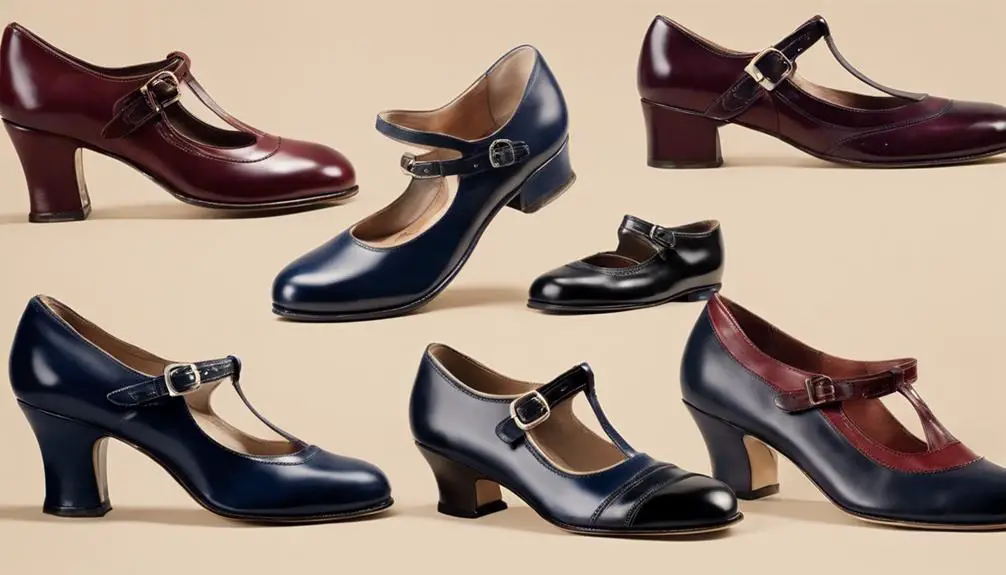
Multiple styles of Mary Jane shoes emerged in the 1920s, each reflecting the decade's dynamic fashion landscape. Flappers, known for their bold and spirited approach to style, favored these shoes for their elegance and suitability for dance. The period saw the rise of popular designs, including:
- Low-heeled pumps: Ideal for comfort without sacrificing style.
- T-strap heels: Offering a playful touch that accentuated the ankle.
- Two-tone combinations: A nod to the Art Deco aesthetic, showcasing contrasting hues.
- Decorative elements: Straps and bows that enhanced the feminine appeal.
Crafted from high-quality leather, Mary Jane shoes featured curved designs and almond-shaped toes, perfectly aligning with the fashion trends of the era. Their versatility made them an essential choice for flapper girls, seamlessly shifting from day to evening outfits. The combination of practicality and stylish embellishments made these shoes not just footwear but a statement of independence and modernity. As you explore the styles and colors of Mary Jane shoes from the 1920s, you'll appreciate how they encapsulated a transformative time in women's fashion, merging functionality with striking aesthetics.
Frequently Asked Questions
Were Mary Janes Popular in the 20s?
Yes, Mary Janes were incredibly popular in the 1920s. Their stylish design and comfort suited the active lifestyles of women, symbolizing a significant shift in fashion and women's independence during that transformative decade.
What Shoes Were Popular in the 1920s?
In the 1920s, you'd notice a variety of popular shoe styles. Elegant T-strap heels, practical low-heeled oxfords, sporty two-tone shoes, and comfortable sneakers emerged, reflecting the era's blend of sophistication and newfound freedom in fashion.
What Decade Were Mary Jane Shoes Popular?
Mary Jane shoes gained popularity primarily in the 1920s. You'll notice they symbolize a shift in fashion, embodying both elegance and comfort, as styles evolved alongside women's growing independence and changing societal roles during that decade.
When Did Mary Jane Shoes Come Out?
Mary Jane shoes first emerged in the early 1900s, evolving from children's footwear to trendy adult options. By the 1920s, they became iconic, symbolizing a modern, liberated approach to women's fashion and comfort.
